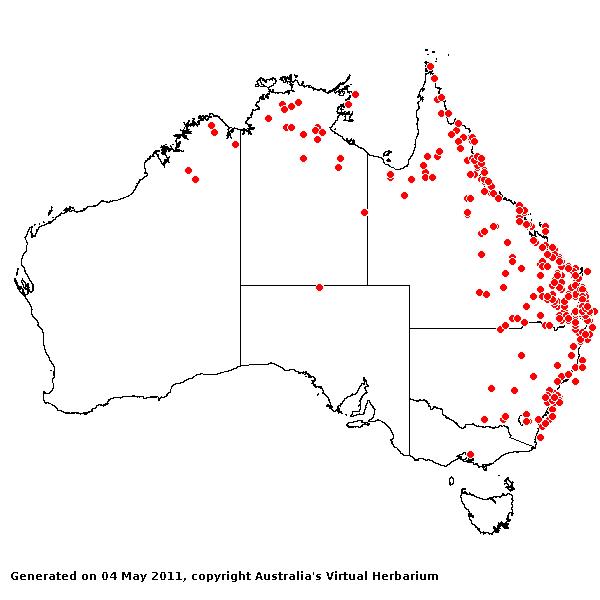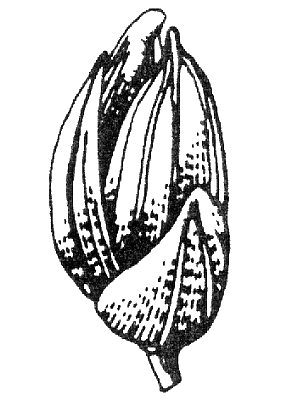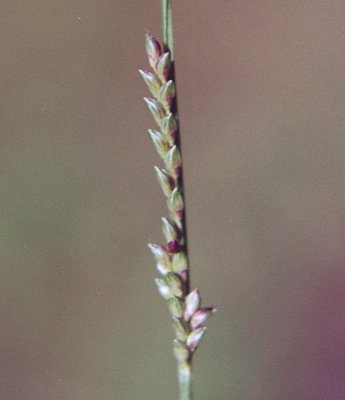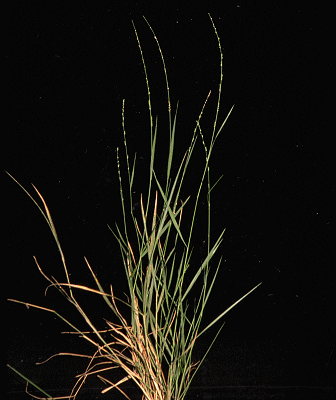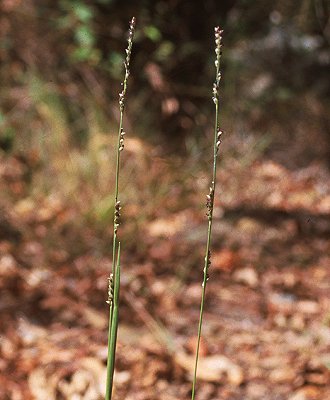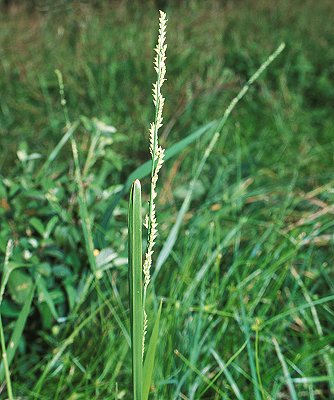Paspalidium distans (Trin.) D.K.Hughes. Bull.
Misc. Inform. 317 (1923). Classification. (GPWG 2001) : Subfamily
Panicoideae. Paniceae.
Basionym and/or
Replacement Name: Panicum distans
Trin., Sp. Gram. 2(15): , t. 172 (1829).
Type of Basionym or
Protologue Information: LT: R. Brown 6098, Australia (BM; IT: BRI
(photo), K). LT designated by Blake, Proc. Royal Soc. Queensland 84: 66–67
(1973); cited in Veldkamp, Blumea 39: 376 (1994).
Recent synonyms:
P. radiatum, P. disjunctum S.T.Blake, Proc. Roy. Soc. Queensland 84: 65 (1973); P.scabrifolium
S.T.Blake, Proc. Roy. Soc. Queensland 84: 69 (1973).
Key references
(books and floras): [2002] D.Sharp & B.K.Simon, AusGrass, Grasses of
Australia, [2008] S.W.L.Jacobs, R.D.B.Walley & D.J.B.Wheeler, Grasses
of New South Wales (323).
Illustrations:
[2008] S.W.L.Jacobs, R.D.B.Whalley & D.J.B.Wheeler, Grasses of New South
Wales, 4th edn (323).
Habit.
Perennial. Rhizomes present. Culms erect or geniculately ascending, stature
slender to delicate, 30–70(–100) cm tall, 2–5 -noded. Mid-culm internodes
hollow. Mid-culm nodes glabrous. Lateral branches sparsely branched. Leaves
basal and cauline. Leaf-sheaths glabrous on surface. Ligule a fringed membrane
or a fringe of hairs, 0.5 mm long. Leaf-blades (5–)8–12(–18) cm long, 1–6.5 mm
wide. Leaf-blade surface scaberulous or scabrous, glabrous or indumented.
Inflorescence.
Inflorescence compound, a panicle of racemes. Racemes 4–10, appressed, 0.5–3 cm
long, 2–3 mm wide, bearing (4–)12(–20) fertile spikelets on each. Central
inflorescence axis 6–16 cm long.
Spikelets.
Spikelets sessile or pedicelled. Fertile spikelets 2-flowered, the lower floret
barren (rarely male), the upper fertile, comprising 1 basal sterile florets,
comprising 1 fertile floret(s), without rachilla extension, ovate, dorsally
compressed, 1.7–2.2 mm long.
Glumes.
Glumes dissimilar, thinner than fertile lemma. Lower glume ovate to oblate,
membranous, without keels, 3–5 -nerved. Lower glume surface glabrous. Lower
glume apex muticous or mucronate. Upper glume ovate, 1.5–1.9 mm long,
membranous, without keels, 5–9 -nerved. Florets. Basal sterile florets
1, barren, without significant palea. Lemma of lower sterile floret 100 % of
length of spikelet, membranous, 5 -nerved.
Fertile lemma 1.8–2.2
mm long, without keel, 5 -nerved. Lemma apex mucronate. Anthers 3.
Continental
Distribution: Temperate Asia, Tropical Asia, Australasia, and Pacific.
Australian
Distribution: Western Australia, Northern Territory, Queensland, New South
Wales.
Western Australia:
Gardner. Northern Territory: Darwin & Gulf. Queensland:
Burke, Burnett, Cook, Darling Downs, Leichhardt, Maranoa, Moreton, North
Kennedy, Port Curtis, South Kennedy, Wide Bay, Mitchell. New South Wales:
North Coast, Central Coast, South Coast, Northern Tablelands, North-Western
Plains.
Notes.
Specimens from northern areas generally have a relatively short upper glume.
In tropical and
subtropical wet sclerophyll forests, tropical and subtropical sub-humid
woodlands, semi-arid shrub woodlands, and arid and semi-arid low woodlands.
Flowers mostly Mar.-Aug.

